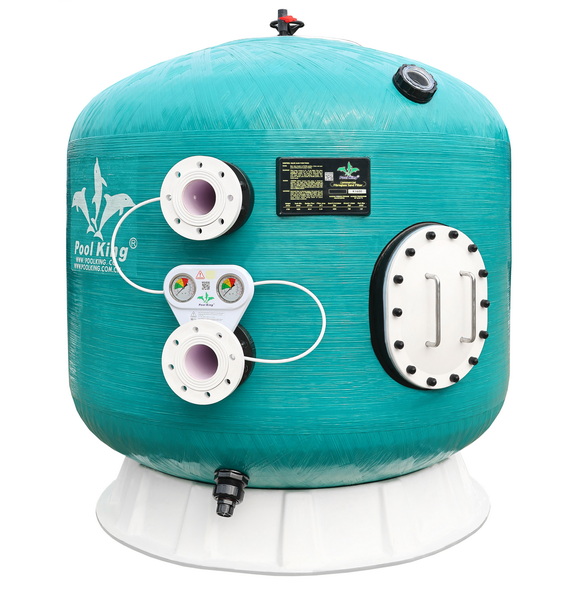Views: 222 Author: Tina Publish Time: 2025-10-20 Origin: Site








Content Menu
● Understanding Pool Filtration Systems
● What Is the Rinse Function on a Pool Filter?
● Step-by-Step Guide to Using Rinse on a Pool Filter
● Choosing the Right Filter and Maintaining It
● Comprehensive Pool Filter Maintenance Tips
>> Backwashing Sand and DE Filters
>> Seasonal Maintenance Schedule
● Frequently Asked Questions (FAQs)
>> 1. How long should I run the rinse cycle on my pool filter?
>> 2. What happens if I skip the rinse step?
>> 3. How often should I backwash and rinse my pool filter?
>> 4. Can rinse function remove algae or heavy debris?
>> 5. Is the rinse cycle necessary for cartridge filters?
Maintaining a clean and safe swimming pool involves several essential processes, among which filtering is paramount. Pool filters play a key role in removing debris, dirt, and contaminants from pool water, ensuring a clear and healthy swimming environment. One crucial, yet sometimes overlooked, setting on many pool filters is the "Rinse" function — essential for effective pool maintenance.
This article will explore what the rinse cycle does on a pool filter, why it matters, and how to properly perform this process to keep your pool filter working efficiently. It will also cover related topics such as backwashing, types of pool filters, and expert tips for optimal pool care.

Pool filtration systems use different types of filters to clean the water:
- Sand Filters: Utilize a bed of sand to trap particles.
- Diatomaceous Earth (DE) Filters: Use fine powder for finer filtration.
- Cartridge Filters: Employ reusable cartridges to capture debris.
Among these, sand filters are common for residential pools, known for durability and ease of maintenance.
The rinse cycle on a pool filter is a short process designed to:
1. Flush out any remaining debris loosened during the backwashing cycle but not yet expelled.
2. Resettle the filter media (such as sand) within the filter tank to maintain proper filtration effectiveness.
3. Prevent dirty water from returning to the pool, which can cause cloudiness.
After backwashing, water flow is reversed to clean the filter media. The rinse function then sends water forward through the filter for about 15-30 seconds, pushing out residual dirt and stabilizing the filter bed.
Skipping the rinse cycle can lead to:
- Cloudy pool water due to unsettled sand or debris.
- Reduced filtration efficiency, as the filter media may be disturbed.
- Increased wear and tear on pool equipment due to inefficient cleaning.
Proper rinsing is a simple step that restores the filter's normal operation after backwashing.
1. Turn Off the Pool Pump
Always start with the pump off to safely adjust the filter valve.
2. Set the Multiport Valve to Backwash and Run Pump
Backwash the filter for 2-3 minutes until water runs clear.
3. Turn Off the Pump and Set the Valve to Rinse
This resets the filter media and flushes out residual dirt.
4. Run the Pump on Rinse for 15-30 Seconds
Watch the sight glass water clarity to confirm rinsing.
5. Turn Pump Off and Set the Valve to Filter
Return the valve to normal filtration mode.
6. Restart the Pump
Pool filtration resumes with clean, clear water flow.
Selecting the best filter depends on pool size, usage, and maintenance preference:
- Stainless steel or fiberglass sand filters for durability.
- DE filters for finer particle removal.
- Cartridge filters for easy cleaning.
Routine backwashing followed by rinsing extends filter life and ensures crystal-clear water.

Proper maintenance not only ensures crystal-clear pool water but extends the lifespan of your pool filter equipment. Here are essential tips for maintaining your pool filter system:
Regularly check the pressure gauge on your pool filter. When the pressure rises by 8-10 psi above the normal operating level, it's time to clean the filter. Higher pressure indicates debris buildup restricting water flow.
- Remove the cartridge and inspect for damage.
- Rinse thoroughly with a garden hose, cleaning between pleats.
- For stubborn dirt, soak cartridges overnight in a filter cleaning solution.
- Replace cartridges every 18 months to 3 years depending on wear.
- Backwash sand filters when pressure rises to 8-10 psi above normal.
- Run backwash for 3-5 minutes until the water runs clear.
- Follow backwash with a rinse cycle to settle the filter media.
- Clean DE filters monthly or when water appears cloudy by disassembling and rinsing grids, then adding fresh DE powder.
- Spring: Inspect equipment, replace seals, clean or replace filters.
- Summer: Clean filters more frequently due to heavy use; backwash sand and DE filters as needed.
- Fall: Remove leaves and debris, prepare filters for winter.
- Winter: Drain and store filters to prevent freeze damage; thoroughly clean before storage.
Maintain balanced pool water (pH, chlorine, alkalinity) to reduce strain on filters. Unbalanced water causes scaling and algae buildup, which clogs filters and reduces efficiency.
- Clean skimmer and pump baskets weekly.
- Rinse or backwash filters based on pressure readings.
- Deep clean cartridge and DE filters quarterly or as needed.
- Replace sand every 3-5 years for optimal filtration.
The rinse function on a pool filter is essential for maintaining pool water clarity and the efficiency of your filtration system. It is a short, simple cycle performed after backwashing that flushes out leftover dirt and resettles the filter media. Skipping rinse can lead to cloudy water and reduced filter performance.
Proper pool care includes regular backwash and always following up with a rinse cycle. Coupled with choosing the right filtration system and scheduling consistent maintenance, these practices ensure your pool stays clean, safe, and inviting.

Run the rinse cycle for about 15 to 30 seconds or until the water in the sight glass is clear.
Skipping rinse can cause unsettled filter media to enter the pool, leading to cloudy water and inefficient filtration.
Typically every 2-3 weeks or when the pressure gauge indicates a rise of 8-10 psi over normal.
No, rinse is for resettling filter media after backwash; heavy debris or algae require backwash or waste setting.
No, rinse/reset is specific to sand and DE filters; cartridge filters are cleaned differently.
[1](https://georgiapoolcleaning.com/diy-tips-for-effective-pool-filter-cleaning/)
[2](https://lesliespool.com/blog/the-ultimate-pool-filter-maintenance-guide.html)
[3](https://envirowaste.com.au/mastering-pool-filter-maintenance/)
[4](https://www.masterpools.com.au/how-to-clean-your-pool-filter-tips-for-sand-or-cartridge-filters/)
[5](https://poolife.com/2024/01/09/guide-to-cleaning-a-pool-filter/)
[6](https://pool.dreametech.com/blogs/blog/how-to-clean-a-pool-filter-a-comprehensive-guide)
[7](https://emoyer.com/blog/pool-and-spa/comprehensive-guide-to-pool-maintenance/)
[8](https://www.poolmarttx.com/post/filter-fitness--the-ultimate-guide-to-swimming-pool-filter-maintenance-for-a-sparkling-summer)
[9](https://www.compasspools.com.au/news/guide-to-swimming-pool-maintenance/)
